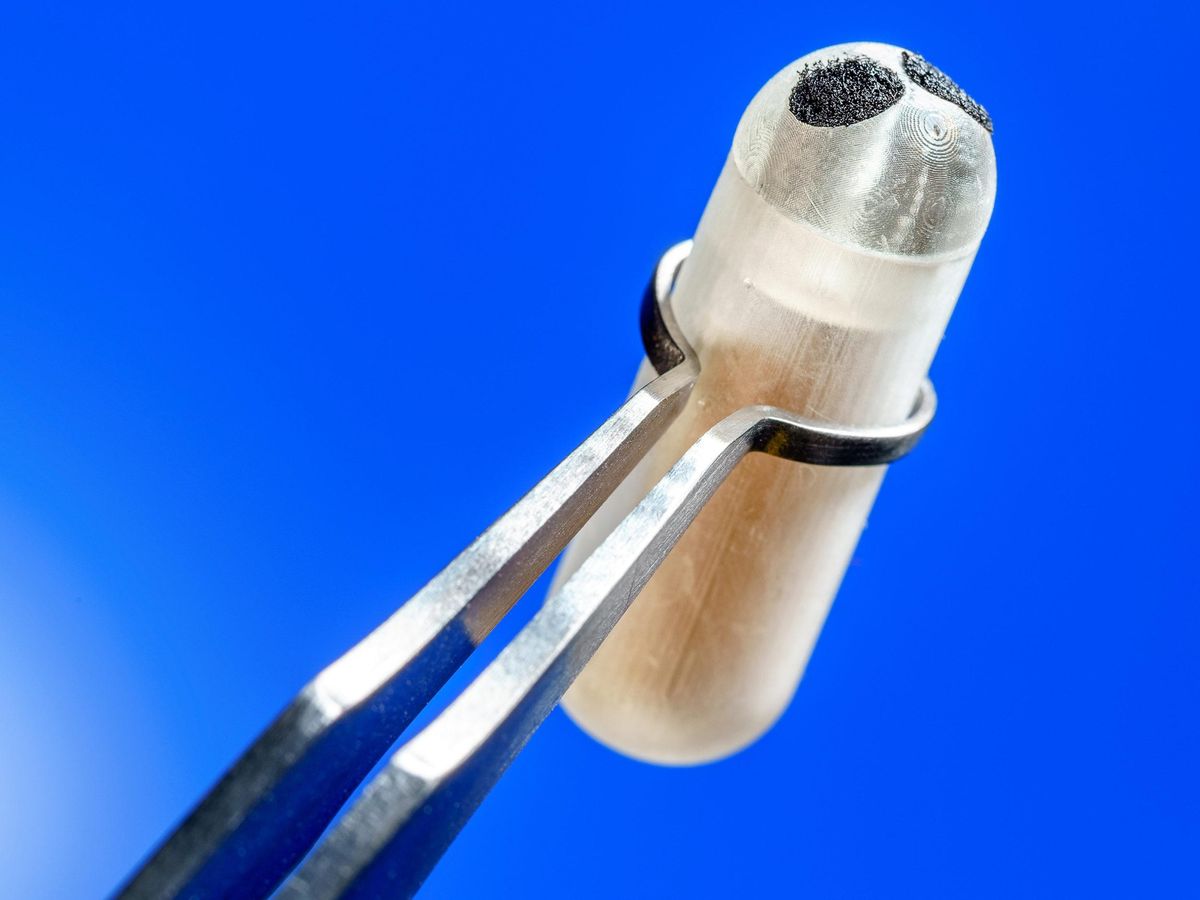A battery-free electronic pill that can help doctors wirelessly analyze molecules generated during vital bodily chemical reactions in the gut has been demonstrated for the first time, say the researchers behind a new study. The team of engineers, from the University of California at San Diego (UCSD), detailed their findings online in the 1 December edition of the journal Nature Communications.
Previously, scientists had developed camera pills to help doctors look for cancer and other problems in the gut. Swallowable electronic capsules also exist that can report body temperature and heart rate, as well as other vital signs, and gases linked with inflammation and changes in diet.
However, until now there was no electronic pill that could monitor glucose (the main sugar found in blood) and other metabolites—chemicals that are key to or formed during bodily metabolism—in the gut in real time. Instead, doctors have been analyzing metabolites using procedures that can result in significant discomfort, such as sticking probes into the stomach or intestines to collect fluids, while only generating snapshots of a constantly shifting environment.
Now researchers have created an electronic pill to help analyze gut metabolites in real time.
“Real-time data is always better—we can use the data to make real-time interventions,” says study cosenior author Patrick Mercier, an electrical engineer at the UCSD. “If we are doing nutrition monitoring, we can better determine real-time intake of food, real-time uptake of glucose into the body, and so on. If we extend our solution to measure other parameters such as pH, we could do real-time quantified intervention in the form of antacids, for example.”
This pill could help analyze the gastrointestinal disorders that affect roughly one in five people at some point in their lives, the scientists note. These may include diabetes, inflammatory bowel disease, obesity, and other chronic diseases caused by abnormal intestinal processes involving the absorption or digestion of gut metabolites.
“I think the big takeaway here is that this allows us to see a new window into the body,” Mercier says. “The gut and its microbiome are such an integral part in human health, and yet we have no real way to sample its operation beyond stool samples or via invasive endoscopies, neither of which capture dynamics. The ability to study these dynamics will potentially revolutionize our understanding of the gut microbiome, and offer opportunities for on-demand personalized therapies.”
Most prior electronic pills made use of batteries. However, batteries often contain toxic elements that could result in serious complications. In contrast, the new battery-free device runs off a tiny fuel cell that consumes glucose in the intestines for energy, while simultaneously monitoring changing glucose concentrations.
Batteries had been an important element of electronic pill design, in part because of the power demands of wireless communications; the small antennas used in those capsules were not good at long-range transmissions, and the body can absorb a significant amount of electromagnetic power. In contrast, the new device relies on energy-efficient magnetic human body communication, which transmits signals using magnetic fields.
An outer coating on the new pill helps protect it from stomach acids, which previously were a major barrier to creating an electronic capsule to analyze intestinal metabolites. This coating dissolves in the gut once the pill is out of harm’s way. Once that layer is gone, the pill is free to monitor the intestines.
The battery-less design and ultralow-power circuitry used in the capsule helped conserve space and enable significant miniaturization. All in all, the prototype device measures 2.6 centimeters long and 0.9 centimeters in diameter.
The scientists experimented on pigs, which have a gastrointestinal tract similar in size to that in humans. The pill continuously monitored glucose levels for 14 hours after it was swallowed, transmitting data every 5 seconds for 2 to 5 hours.
If doctors could use this pill in humans, “we would be able to study clinical glucose uptake by the body upon ingestion of food in real time,” Mercier says. “This could be quite interesting in applications concerning nutrition, diabetes, and so on.”
The researchers now plan to shrink the pill to make it easier to swallow, potentially enabling human use. In addition, they aim to add more sensors to “enable all sorts of other interesting clinical applications,” Mercier says. “The clinical applications are potentially vast.”
- Flourescent Camera Pill Could Hunt for Cancer in Your Guts - IEEE ... ›
- UK Pharmacy to Sell Pill with Ingestible Microchip - IEEE Spectrum ›
- Robopill Drills Through Mucus to Deliver Drugs - IEEE Spectrum ›
- Shot to the Gut: “Robotic” Pill Sails Through Human Safety Study ... ›
- Swallowable Robotic Pill Offers Less Invasive Biopsies - IEEE Spectrum ›
Charles Q. Choi is a science reporter who contributes regularly to IEEE Spectrum. He has written for Scientific American, The New York Times, Wired, and Science, among others.



